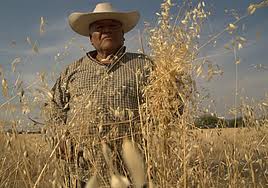 |
| Picture Credit: maketradefair.com |
By Timothy A. Wise
September 27, 2010
One version of an old joke features a shipwrecked economist on a deserted island who, when asked by his fellow survivors what expertise he can offer on how they can be rescued, replies, “Assume we have a boat.”
In Mexico earlier this month, I was thinking that the real-life version of the economist’s solution is: “Assume we have employment.” But it’s no joke. A World Bank economist had just spoken during a seminar at Mexico’s National Autonomous University on Mexican farm policies in the wake of NAFTA. Earlier, I had presented my recent paper, “Agricultural Dumping Under NAFTA,” which came out in the new report “Subsidizing Inequality,” released in Spanish by the Woodrow Wilson Center and its Mexican partners.
The World Bank economist on the afternoon panel delivered a barely modified version of the Bank’s longstanding diagnostic on small-scale agriculture:
Small landholdings make inefficient use of land, he explained, and the food crops smallholders grow can be produced much more efficiently by industrialized farmers in Mexico and the United States. NAFTA gives Mexico tariff-free access to those goods, so Mexico’s two million small-scale corn farmers should enjoy the cheaper tortillas and seek more productive activities, growing high-value crops or moving out of agriculture. Mexico’s agricultural policies should be geared not toward increasing smallholder food productivity but toward providing the social safety net that can help them make that transition while improving infrastructure and public services in rural areas.
Moving out of agriculture? Into what? “Assume we have employment” can be the only answer. Because just as shipwrecked survivors can’t sail home on an economist’s theoretical boat, Mexico’s small-scale farmers need real jobs, not assumed jobs, if they are to give up their lands and their homes. They aren’t blinded by neoliberal ideology and neo-classical economic training. They look out at the post-NAFTA economic landscape and they see the bleak picture we documented in our report last year with the Carnegie Endowment.
Mexico under NAFTA created barely more jobs than it destroyed in manufacturing, and the U.S. border areas are now better known for drug trafficking than maquiladora export factories. The growing service sector created more informal than formal sector jobs; only so many people can work in Cancún and other tourist areas. Fully, 57% of Mexico’s workers are stuck in informal employment, up from 52% before NAFTA. Meanwhile, the World Bank’s desired “transition” in agriculture, accelerated by the added pressure of tariff-free imports dumped by the United States, has pushed an estimated 2.3 million farmers and workers out of agriculture. Those who left went where the jobs were – in the United States – despite NAFTA’s failure to liberalize labor markets. Migration surged after NAFTA to over 500,000 people per year. Many left behind family members who, despite a 66% drop in real corn prices, increased their corn production.
Irrational? Hardly. Small-scale farmers are at least smarter than World Bank economists. They know that growing corn, with limited technology and low yields, is inefficient only if they have a more productive use for their land or their labor. The land is often the only asset the family has, and most smallholder land is unsuitable for high-value crops. As for their labor, they send family members as seasonal or permanent migrants and use the remittances to keep their farms. Are their low corn yields proof of inefficiency? Or do they show that smallholders are maximizing their available labor and resources?
The World Bank economist didn’t fare well, not with farm movement leader Victor Suarez on his panel. Since NAFTA, Suarez railed, we’ve had a flood of dumped corn and other products from the U.S., a financial crisis and recession, a rise in migration, a food price crisis that caused tortilla riots, and all the World Bank can say is that our farmers are unproductive and should get out of farming. Our farmers have increased their productivity, despite all the disadvantages, Suarez shouted, despite being written off by the World Bank and the Mexican government, despite Mexico channeling its own farm subsidies to the biggest industrial farmers. Imagine what we could do if the government valued our work, he concluded, pointing to the wide range of rejected policy proposals his organization and others have made in recent years.
Mexican researchers have estimated that Mexico could double its corn production and regain self-sufficiency in the cherished plant its indigenous farmers helped create – without the introduction of transgenic corn.
All you need to do is assume a different economic development model.


